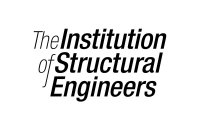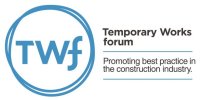The course provides an introduction and guide to those in the design and construction industry who are likely to be involved with the principles concerning the detailing of structural steelwork.
The art of steelwork detailing continues to play a pivotal role in the successful creation of any steel structure. The technological developments associated with computer aided detailing and the use of fully automated techniques and processes in the fabrication shops have played a major part in bringing profound improvements across the industry. The course will therefore present the best standards of detailing allied to economic requirements and modern fabrication processes in accordance with Eurocode 3 and UK practice, but which are relevant in most areas of the world.
Please note that this online version of the course will be split into modules.
The course is suitable for graduates and those employed by steel design engineers, structural steelwork fabricators or building contractors who are required to understand and/or apply good detailing practice used to interpret the designer’s and code requirements, and how this information is provided in the form of drawings to the fabricator and construction site.
Aims & Objectives:
On completion of this course delegates will be able to:
- Have an understanding of detailing functions, practice, and conventions.
- Interpret the requirements of applicable codes, including those of Eurocode 3.
- Apply standard detailing data requirements for standard steel sections, bolts and welds.
- Understand how common structural shapes are joined to form members and complete structures.
- Apply various connection and tolerance guidelines to achieve proper site fit-up.
- Appreciate the important developments in computer aided design and shop automated fabrication.
- Appreciate the important link between detailing and construction costs.
- Examine examples of various steel structures including single and multi-storey buildings, towers and bridges.
Course Outline:
Module 1 – Detailing practice and conventions
- Function of the steelwork detailer and required output in accordance with Eurocode 3, national and local authority, in-house standards, and client requirements regarding fabrication, erection and safety.
- Representation of steelwork on layout and detail drawings.
Module 2 – Common structural steel structures
- Types and vocabulary of various steel and composite structures, including commercial and industrial single and multi-storey framed buildings, bridges, towers, masts, gantries, tanks, offshore and power support structures.
Module 3 – Detailing data for standard sections, solid sections, bolts and welds; protective coatings; fire protection
- Rolled and formed steel sections (including hollow sections, tie rods and anchorages).
- Steel solid sections: flats, plates, slabs, squares and rounds.
- Bolt types (including HSFG and anchor/HD bolts).
- Welds and welded joints.
- Weld testing and inspection requirements.
- Tolerances and cambers.
- Application of protective coatings and fire protection requirements.
Module 4 – Automative steel fabrication; computer aided design and detailing; economic steelwork design and construction costs
- Advantages of automative steel fabrication, CAD, propriety software and equipment. Steelwork design and detailing effects on construction costs.
Module 5 – Examples
- Structural steel framed buildings.
- Lattice girders and trusses.
- Portal frames.
- Base plates and holding down bolts.
- Columns.
- Beams.
- Connections and splices.
- Staircases and handrails.
- Metal flooring.
- Purlins, girts, sag bars, diagonal ties, sheeting, and roofing.
- Tubular and hollow box members.
- Temporary works; falsework and formwork.
Module 6 – Review and Discussion
Intended For:
Civil and structural engineers and technicians seeking an introduction and practical guidance to the detailing of structural steelwork in order to provide economical fabrication and safe erection.
Pre-Course Requirements:
A copy of BS EN 1993-1-8:2005 Eurocode 3: Design of steel structures _Part 1-8: Design of Joints.








